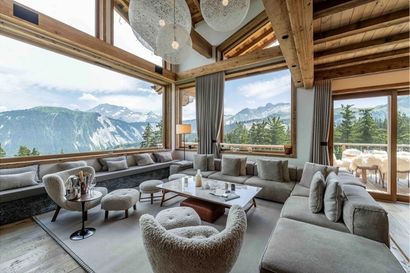‘A very warm welcome to India,’ comes the pilot’s voice as we touch down on the tarmac. He’s not wrong. At 47 degrees, New Delhi is not only the country’s most populated and diverse city, but also one of the hottest. In head-to-toe linen, the temperature shouldn’t be an issue, but never underestimate an Englishman’s capacity for complaining. Watch out India, the British are coming – and not for the first time.
India, for decades, fell under the rule of the British Empire. 70 years ago this August, however, the nation regained its freedom. Post-war civil unrest and nationwide protests spurred the then Viceroy of India, Lord Mountbatten, to sign the Indian Independence Act of 1947 – bringing a swift end to British rule in the subcontinent.
It was a hasty exit for such a lengthy occupation. What had begun, almost 200 years before, as a series of annexations by the East India Trading Company had, over time, escalated into full colonisation. And, while the Empire introduced to India ‘gifts’, including the rule of law and the railway system, we Britons were also guilty of many transgressions against a culture considerably older than our own.

Seventy years on from Mountbatten’s handling of India’s independence, I have called on bespoke British travel agency Abercrombie & Kent to help me follow in the Viceroy’s footsteps. From the whitewashed bungalows of New Delhi’s government district to the colourful bazaars of Jaipur, I too will speak to people and explore places within this commonwealth country, in order to determine just how lasting Britain’s influence has been on India – a country Mountbatten once dubbed ‘the land of silks and spices’.
Outside New Delhi’s sandstone Parliament buildings, I join local historian Davinder Singh – and a large number of macaques – to discuss the effects of the Empire, and he tells me that the British still split opinion in Indian’s largest city. A sweltering melting pot of different religions and cultures, the leafy capital suffers from a rapidly-growing population: 25 million, at last count. And it’s a problem that was inadvertently caused by the British.
‘A very warm welcome to India,’ comes the pilot’s voice as we touch down on the tarmac. He’s not wrong.
‘Delhi was made India’s capital in 1911, under Imperial rule,’ Davinder explains. ‘That meant a better economy and advancements in technology and construction, but also, I think, many more people to support.’
As the sun sets on another hazy working day, the city noisily agrees. Humid and bustling, Delhi’s streets fill with frantic taxis and municipal buses overcrowded with workers. The macaques continue to chew, unfazed, on stolen snacks as a Royal Enfield tears by. Davinder gestures after the motorcycle.
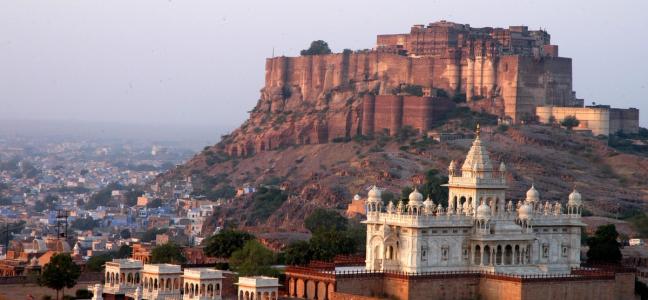
‘As you can see, there are still British influences here. These buildings around us were even designed by British architects. But some decisions the Empire made are seen to have damaged Delhi, so we removed the more obvious Imperial memorials. Down past the India Gate cenotaph, there used to be a fifty-foot tall statue of King George V. We took that down in the 1960s.’
There are many similar examples of national reassertion across the city. But, from the sprawling tropical suburbs to the modern commercial centres of the capital, Davinder says there was little spite or ceremony in the removal of British monuments. Instead of dwelling on the past, New Delhi is a city intent on pushing forward, to become an economic and democratic equal of Western countries. There may be a rich history here, but it never takes precedence over progress.
However, not all of India’s 4,000 cities have taken the same forward-thinking approach to post-Imperial life. If journeying across this wild and wonderful country proves anything, it is that each distinct state and town is rebuilding differently. And, the moment you move away from the increasingly high-rise and westernised cityscapes of New Delhi and Mumbai, India begins to sing a considerably more traditional song.
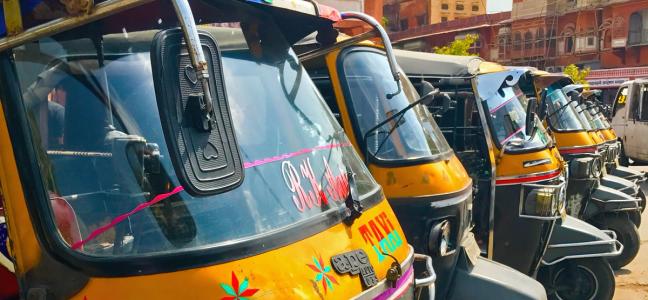
Agra, a stone’s throw from the capital, is a city of spices and saris and colour and dust. This is India proper, a bastion of traditionalism working to scrub any trace of the Empire from its streets.
Barefoot boys play cricket amongst the rubble. Nimble lizards and striped palm squirrels dart about as if they’re chasing each other. Temples are draped with endless reams of colourful silk – in preparation for endless weddings. Progress here is different. Varun Pathak, a local academic A&K have sagely recruited as a guide, tells me that rather than using the West as a template for navigating the 21st Century, Agra – like many other Indian cities – has forged its own path.
‘We have developed, but in our own way,’ Varun explains, as a cow wanders brazenly between us. With a garland of fresh orange marigolds hanging from its horns, the interruption illustrates just how different life here is. Creatures and cultures co-exist in India to an extent I’ve never seen and, sacred to Hindus, these holy cows command universal respect. Free to roam after they pass milk-yielding age, and fed by the locals who revere cattle as symbols of both strength and gentleness, cows are everywhere, and walk openly through markets and across traffic.
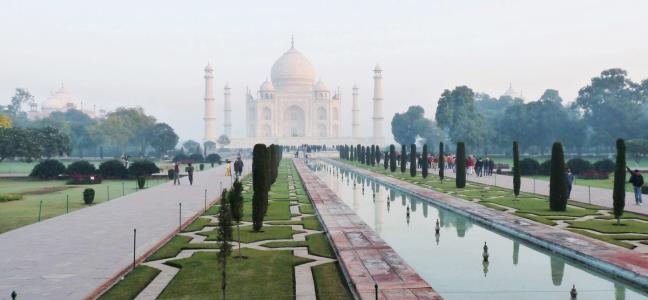
And what traffic. Lane etiquette appears to be a foreign concept in India, and tuk-tuks zip and nip between the other traffic like wind-up toys. But it works, and this is a city doing what is best for itself. Overt tourism hasn’t even managed to pervade Agra – quite the feat for a city which undeniably boasts the stickiest tourist honey trap in all of India; the Taj Mahal.
‘The Taj Mahal is India,’ says Varun, as he guides me around the monument’s manicured gardens. ‘Go anywhere in the world and that’s what people associate with us. But, back in 1837, the Governor-General, Lord Bentinck, tried to destroy the Taj, break up the marble and send it to Britain. He failed, but the British Empire almost robbed Agra, and India as a whole, of its most powerful symbol.’
Perhaps this explains why, unlike Delhi, Agra doesn’t chase the British way of life – and why tourism came so low on the whole nation’s agenda after they were granted independence in 1947. But, rather than this making India a destination unworthy of your time, the honesty and authenticity of the country serves only to ramp up the fascination factor. The Taj Mahal is for India, not for us. Unashamedly closed for prayer on a Friday, religion comes head and shoulders above even the money-making minarets of the iconic mausoleum’s neighbouring mosques.
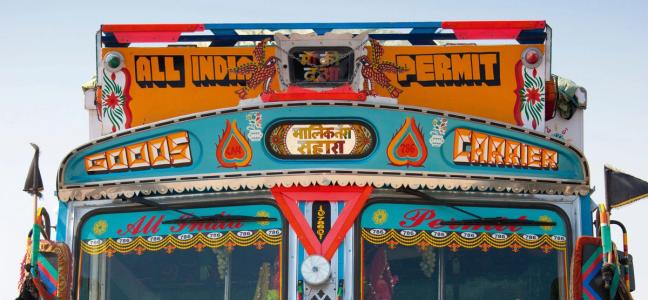
Which takes us down another road; that of religion in India. While Britain has seen more and more people stray from the Church since the end of the Empire, India’s religious following is stronger than ever. A startlingly harmonious society of both Hindus and Muslims – with Sikhs, Buddhists and Jains thrown into the mix too – has a bearing on everything from law and architecture to fashion and food, and commands a much deeper and richer respect than faith in Britain can muster today.
Even between cities, huge trucks decorated with colourful patterns, tassels and flowers rumble like travelling temples down the dusty highways. On the uneven six-hour desert drive from Agra to Jaipur, my turbaned-taxi driver, Bittu, honks happily at these lorries as he combs his thick moustache. He seems equally enthused by the animals we flit past, with antelopes, wild peacocks and stony Indian elephants all turning his head.
Huge trucks decorated with colourful patterns, tassels and flowers rumble like travelling temples down the dusty highways
The wild dogs part as we roll into Jaipur, arguably the culinary and artisanal capital of India. Alongside neighbouring Jodhpur, these twin cities of Rajasthan have emerged from the Empire in yet another unique way. Here, the focus is on resurrecting the traditions of the past, restoring monuments and forts from the Mughal Dynasty and rediscovering lost arts and forgotten practices.
Over a terracotta cup of yoghurt drink Lassi, local government employee Raj Singh tries to convince me that the old ways are still the best, and why yielding to stereotypes for tourism is simply not an option.

‘Our food,’ Raj smiles, pointing out piles of pomegranates and baskets of the greenest mangoes, dumplings dripping in ghee and milky chai bubbling in cauldrons over open flames, ‘is different to what you might expect.’
‘We have many spices,’ he continues, gesturing around the bazaar at boxes of cinnamon, cardamom, turmeric and saffron, ‘but our meals are not as spicy as westerners think.’ We push through a crowd gathering outside a stall selling samosas, and a man frying jalebi – a sort of sweet pretzel – offers us a bite to try.
‘From food to furniture-making and stonework, we’ve seen craftsmen return to using ancient methods,’ Raj explains as we duck between a misty marble workshop and camel-hair carpet store. ‘But it’s not regressive. In fashion, for example, only a handful of men still wear the dodhi – traditional all-white dress – and, regardless of religion, women are no longer forced to cover up.’
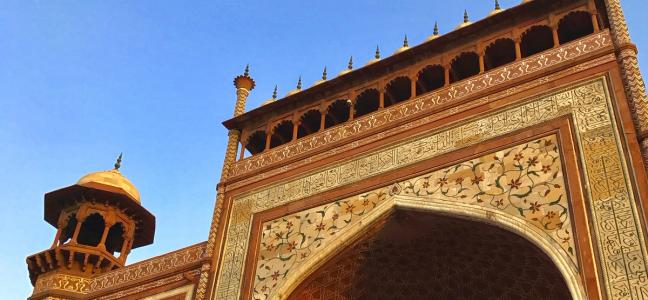
Several days later in Jodhpur, below the colourful canopies of another busy marketplace, it is again as if the British were never here. Camels trudge by, the temperature touches 49 degrees and crackly sitar music is piped through tinny speakers. But look closer and there are glimmers of the Empire to be found. Jodhpur is the judicial capital of Rajasthan and, while recent Indian architecture has seen a notable return to traditional Indian style – just look at Delhi’s incredible Bahá’í Lotus Temple – the local courthouse is as recognisably British as the laws and systems practised inside.
‘It’s true, the British Empire undoubtedly had a profound impact on the progression of this country,’ Indian Member of Parliament and former under-Secretary General of the UN, Shashi Tharoor, tells me over a glass of mint water. ‘But I don’t think the average person has any hard feelings anymore.
‘Our food,’ Raj smiles, ‘is different to what you might expect.’
‘We did try to undo a lot of things. When freedom came, the economy was failing, there was an incredible amount of poverty and India was left with a lot of rebuilding to do. But we have since revived our own industries. It was a slow start as, by 1947, India had missed the bus for the industrial revolution because Britain had thrown us under its wheels. But, today, there’s a clear desire to reassert old practices and faiths, to re-establish a quiet pride in Indian nationalism.
‘It will come,’ Tharoor nods, setting down his glass. ‘A balance will eventually be struck. But there has certainly been an awakening – a new need to find pride in our past before the British arrived.’
The politician’s words ring true. From the meticulous renovation of ancient sites to the revival of traditional crafts, there has been a clear shift in public opinion. Progress, India has realised, doesn’t necessarily mean playing catch-up with the West. Even the larger cities, which may at first seem to be chasing Europe, have a distinctly different order and feeling when you’re in the middle of things. This is a bold, individual country; and one keen not to waste its second chance.
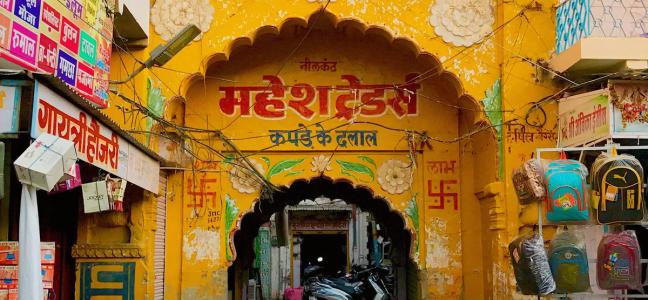
And so today, India is India for India. The tuk-tuks on the streets, which could so easily have been hijacked and exploited for tourism, remain workaday. The food, considerably milder than we’ve been led to believe, refuses to spice things up to stereotype. Even the rupee, the nation’s tiger-bearing currency, can’t be found at a bureau de change outside India for love nor, indeed, money.
Put simply, this is a nation which no longer panders. And, seventy years free from the British Empire, each distinct area of India is still working to establish its own identity in a unique way. Some cities are rapidly modernising, while others have used their chance to look to the future to do the complete opposite, and are winding back the clock to a time before the British arrived.
India may have had a shaky start when it first hoisted the orange, green and white in place of the red, white and blue, but today it is a country climbing the economic ladder and reassuming a lost identity of traditional flavours and bold colour. Now is the time to revisit the ‘land of silks and spices’ for, even though it may be one of the oldest nations on earth, India is cooking up something brand new.
Colonial India with Abercrombie & Kent costs from £2655 per person based on two sharing for 11 days. Contact Abercrombie & Kent on 01242 547 755 or at abercrombiekent.co.uk

Become a Gentleman’s Journal Member?
Like the Gentleman’s Journal? Why not join the Clubhouse, a special kind of private club where members receive offers and experiences from hand-picked, premium brands. You will also receive invites to exclusive events, the quarterly print magazine delivered directly to your door and your own membership card.
